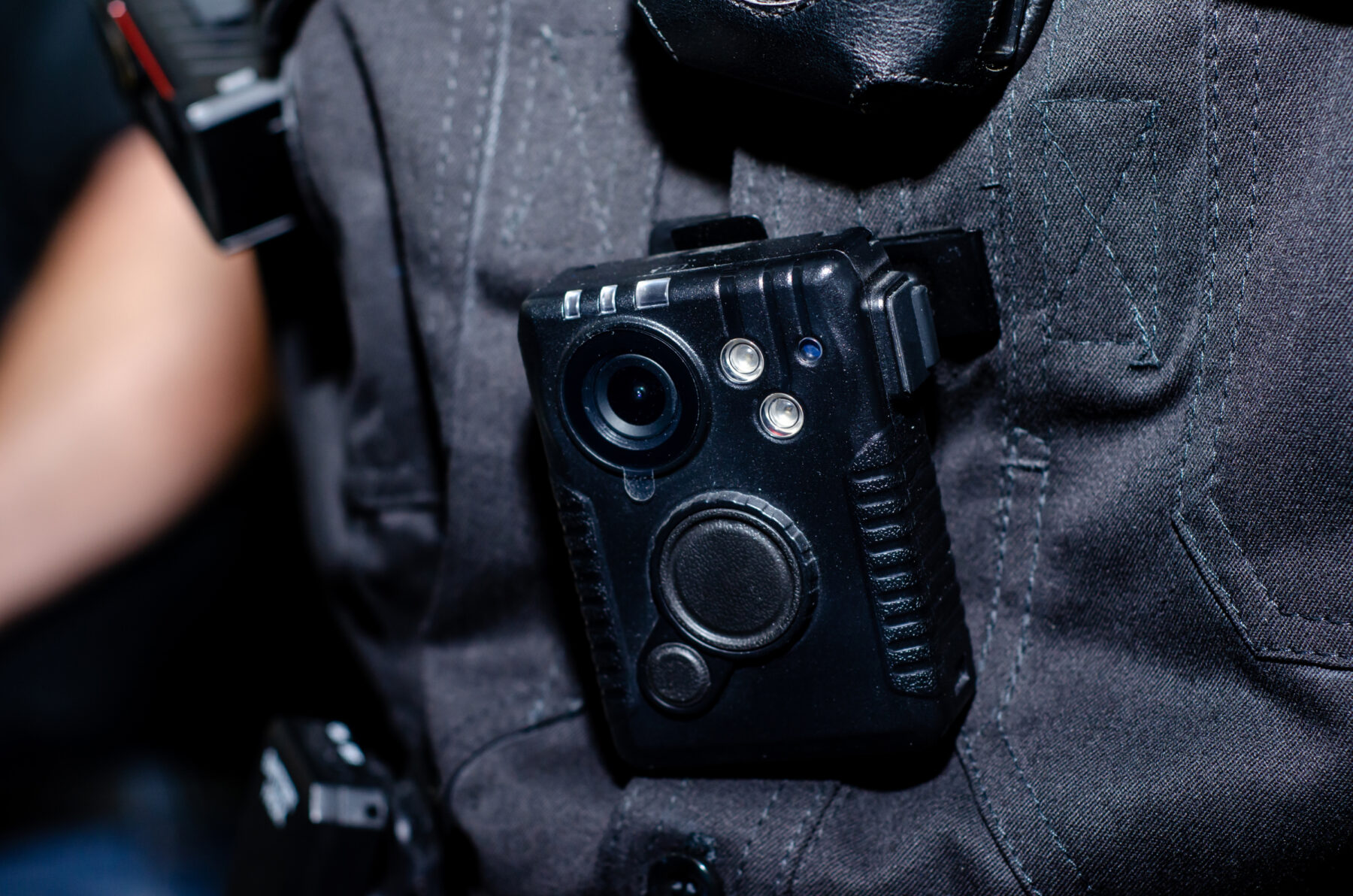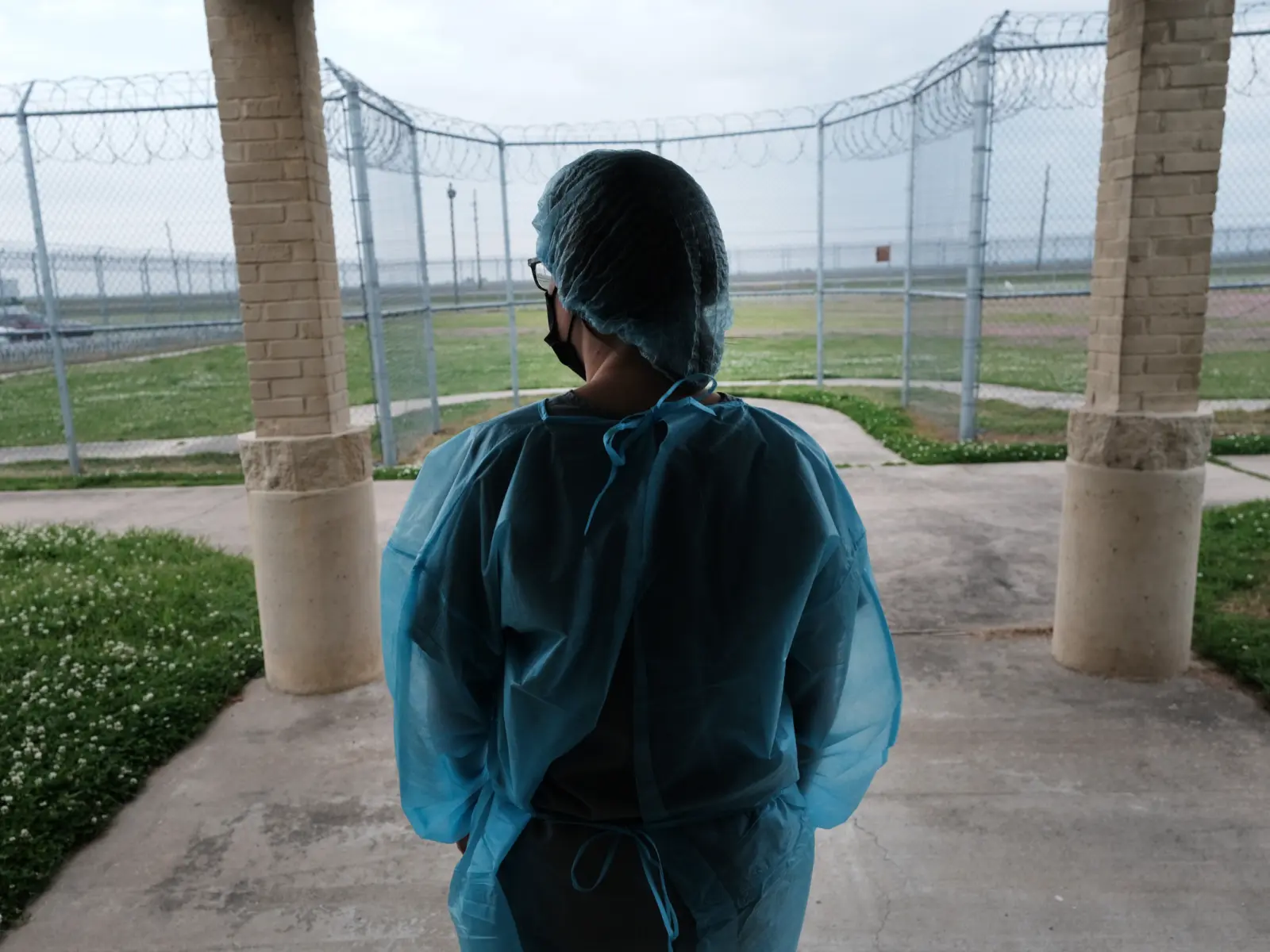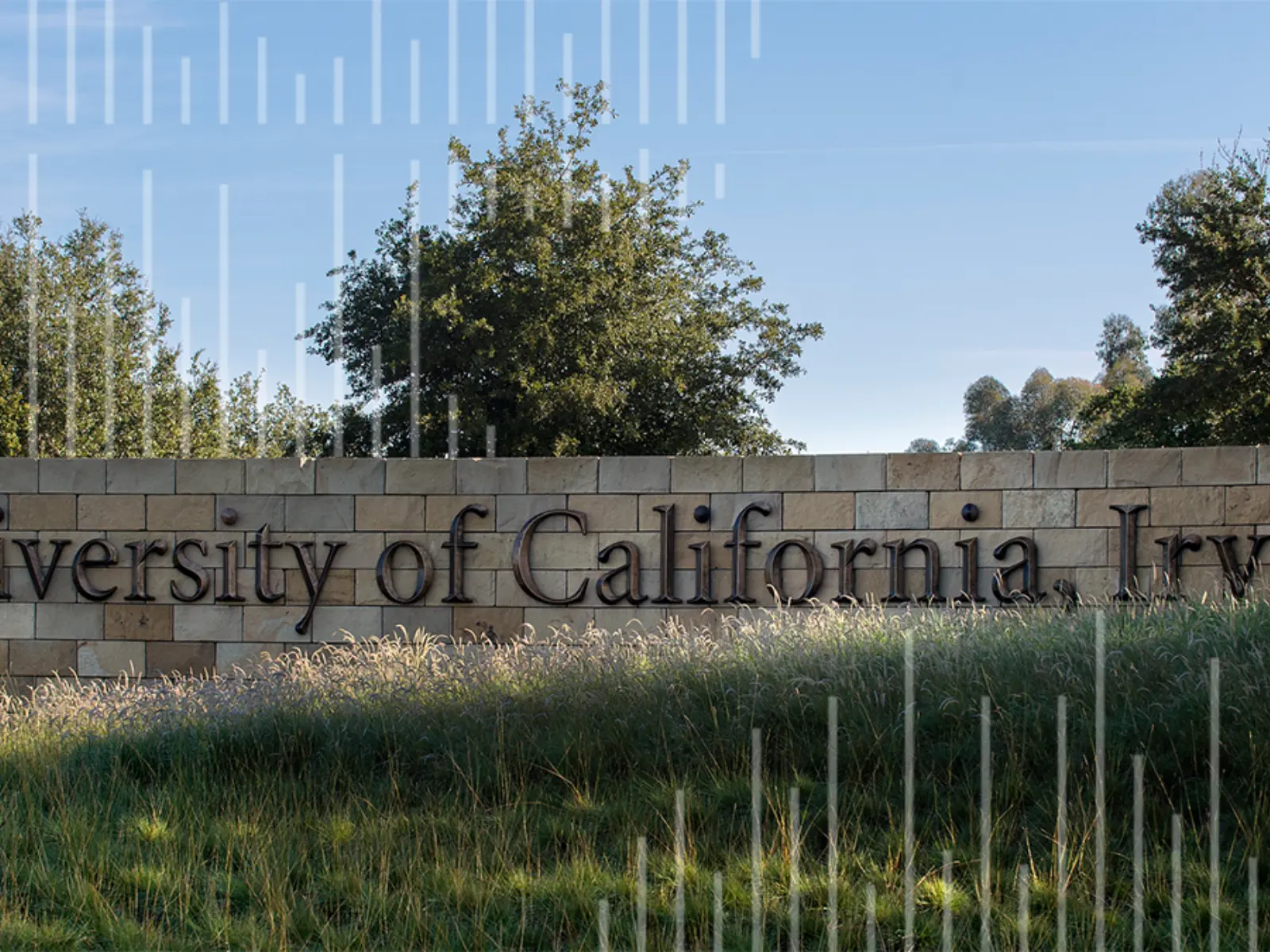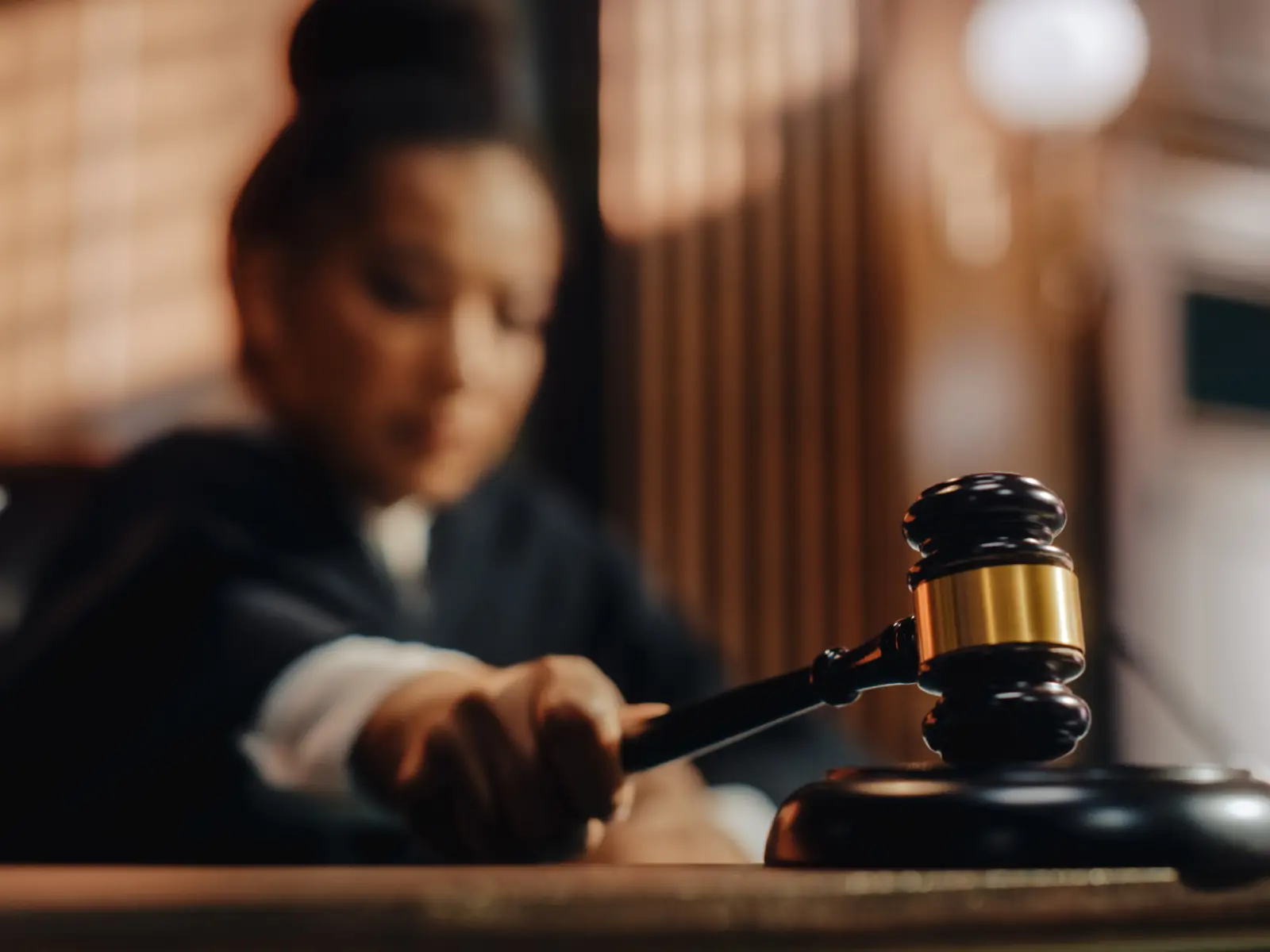In recent years, thousands of police departments across the United States have adopted the use of body-worn cameras for officers. The goal is to enhance community trust by increasing accountability and transparency. But research on the impact of body-worn cameras shows mixed results, which may be explained, in part, by departments’ inability to review more than a fraction of the footage. Recently, some departments have begun to employ new technologies that automatically analyze body-worn camera footage in order to improve footage analysis.
In an effort to understand whether these technologies are effective, researchers at Arizona State University are studying the impact of an artificial intelligence tool that reviews body-worn camera footage in three Arizona police departments. With support from Arnold Ventures (AV), Michael D. White and Aili Malm are using a randomized controlled trial (RCT) to evaluate the planning, implementation, and outcomes of the technology, including: its impact on supervisor and officer perceptions; performance metrics for officers and community members; and officer behaviors such as stops, searches, tickets, arrests, use of force incidents, complaints, and injuries. The study also examines how positive feedback that the technology provides to officers for highly professional interactions with the public could help change officer behavior.
“As more police departments are adopting technology to transcribe officer-civilian interactions from body-worn camera footage, the question of whether such technology actually improves policing becomes more salient,” says Josh Jackson, criminal justice research manager at AV. “Dr. White and Dr. Malm’s research will contribute to our understanding of how body-worn cameras should be used to enhance policing.”
We sat down with Michael D. White, associate director of the Center for Violence Prevention and Community Safety at Arizona State University and a former deputy sheriff, to discuss the problems and promise of body-worn cameras, how AI tools may improve their use, and what his team’s research has found so far.
This conversation has been edited for clarity.

Arnold Ventures
At a personal level, how did you become interested in this topic?

Michael White
In another lifetime, I was a deputy sheriff in Pennsylvania. Since then, for the last 25 years, I have been conducting research with and for the police. My primary objective is to engage in research that helps police chiefs and officers make better decisions. I was one of the researchers who began evaluating the impact of body-worn cameras early on, back in 2014 and 2015, and since then I have been consulting with the Justice Department and for agencies that receive federal funds to get body-worn cameras, as well as doing my own independent research. Body-worn cameras have been highly effective in some places and not in others. The inability for departments to use all their footage really limits the potential benefits. So, when companies began applying their technologies to body-worn camera footage, it caught my attention as something that could dramatically alter the landscape of this accountability tool. Within law enforcement, there’s a ton of interest in AI, particularly in how it can be used to enhance police goals. The job of my team, as researchers, is to serve as an independent set of eyes evaluating whether this technology delivers on its promise.

Arnold Ventures
What is the issue that you’re working to evaluate around body-worn cameras in Arizona?

Michael White
A central issue is how difficult it is to implement and successfully manage a body-worn camera program. Police departments found out very quickly that it’s easy to buy cameras and put them on officers, but there are challenges around the training, policy, and resources. A central part of this difficulty is the enormous amount of footage that’s generated every single day. Police departments, communities, and prosecutors can review very little of that footage, often under 5%. And many of the benefits of body-worn cameras cannot be realized if the footage is not reviewed. One potential intervention is artificial intelligence. My research team is evaluating a product developed by a company called Truleo, which uses AI to examine 100% of audio in nearly real time. The idea with this technology is that it may be able to help realize all the potential benefits of body-worn cameras.
Disclosure: Arnold Ventures has provided financial support to Truleo and to local municipalities seeking to use its tools.

Arnold Ventures
Why does it matter to make sure that all of the camera footage is reviewed?

Michael White
Encounters between police officers and community members have essentially been invisible for 175 years. In most cases, there’s no independent record of what happens. Body-worn cameras emerged as a tool to change that, because it creates an independent video and audio record. But most of the footage is never reviewed, and the adoption of this AI technology aims to correct that. It’s important that this technology works, because it has the potential to allow departments to harness all the value of that footage. Officers are out there recording what they’re doing every single day in interactions with community members, the vast majority of which would normally never be reviewed by anybody. Now it can be run through an algorithm. The Truleo product, in particular, can classify incidents immediately in terms of what officers say and do. It flags incidents for supervisors to review based on language and then it produces metrics of officer behavior over time — not only to identify those who are engaging in problematic behavior but also to highlight excellent conduct.

Arnold Ventures
What has your research uncovered so far?

Michael White
Our team is evaluating the adoption of this AI technology in three Arizona police departments. Two are medium size: the Casa Grande Police Department and the Apache Junction Police Department, with just under 100 officers total. The third is a large state agency: the Arizona Department of Public Safety. Our studies are rigorous RCTs. The RCTs of the two smaller agencies have been underway for the last five or six months and will end shortly. One of the primary research questions is whether the technology is viable. Will police officers and supervisors actively embrace and use it, and, if so, does it have the potential to change what police officers say and do in the field? We interviewed officers, did surveys of officers and supervisors, and talked to leadership. Officers are interested in this technology, but there’s also a concern. They wonder if AI being used to review their footage will result in a “gotcha” moment. But so far we have found, in both departments, that the technology has been almost seamlessly integrated into daily operations. Our next question is whether this innovation changes behavior — how it affects what officers say, whether they use force, and the impact on stops, searches, and arrests. Soon, we’ll get into those more concrete outcomes. As the randomized period ends and we compare the officers to control groups of officers, we can see if there has been behavior change.

Arnold Ventures
What potential does this technology have to benefit community members and community safety more broadly?

Michael White
The Truleo algorithm does several interesting things with footage as it’s being uploaded and analyzed. One is that it rates the professionalism of officers’ behavior based on what they say, and how much they are explaining to community members whom they’ve stopped. It actually produces emails that it automatically sends to officers when they have what’s been classified as a highly professional encounter, and it does the same thing when an officer demonstrates high composure — for example, if there’s a community member who’s angry, upset, and agitated, and the officer is showing patience and not escalating. When we talk to officers about this, they are acutely aware of what they can say to get that “attaboy” email. What that means is that some of the officers in these two departments are changing how they handle encounters and offering more explanation, and that’s an important behavior change, because there’s a whole body of research suggesting that when officers are more communicative and listen more, that has the potential to reduce the likelihood that things will escalate.

Arnold Ventures
How do you hope that the findings from your research can help to influence policy and practice?

Michael White
The most immediate implication of the study is going to be for these three specific police departments. This technology is brand new, and it’s expensive. The research that my team is conducting is going to offer some concrete evidence to those departments on whether the benefits truly outweigh the costs. Then, of course, the evidence that we’re producing will have value for any other law enforcement agency in the United States that’s considering the adoption of an AI-based product like Truleo.

Arnold Ventures
Why is it so important to build this kind of evidence base for policy interventions, more generally?

Michael White
Police chiefs don’t want to make decisions in a vacuum. They want data and evidence that can inform their decision-making. Rigorous research and causal methods provide that kind of evidence. The footage has tremendous value. By using it, a chief can feel confident that whatever has happened during the day between police officers and community members is captured, examined, and analyzed. If there’s problematic behavior, that’s going to get flagged, and if there’s exceptional behavior, that’s going to get flagged, too. We’re early on — just five months into a two-year project. The way I view our job is that, in addition to measuring the impact and doing our quantitative analysis, we tell the story of what happens in these departments that adopt the technology. So far, that story is positive.




















